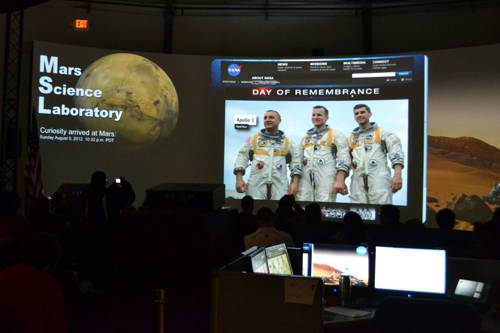
FAQ About The Impact of Immersive Theater on Audience Engagement

What is immersive theater?
Immersive theater is a form of performance art where the audience is an active participant, often interacting with the actors and the environment. Unlike traditional theater where the audience observes from a distance, immersive theater places the audience in the middle of the action, often without a clear boundary between performers and spectators.

How does immersive theater engage the audience differently than traditional theater?
Immersive theater engages the audience by making them an integral part of the performance. This can involve physical movement through the performance space, personal interactions with the performers, and sometimes even participation in the storyline. This personalized experience can lead to a deeper emotional connection and engagement compared to traditional theater, where the audience remains passive.

What are some examples of immersive theater?
Notable examples of immersive theater include productions like "Sleep No More" by Punchdrunk, "Then She Fell" by Third Rail Projects, and "The Great Gatsby" by Secret Cinema. These performances often take place in unconventional spaces and require audience members to navigate their way through different scenes and interactions.

How does immersive theater influence storytelling?
Immersive theater influences storytelling by allowing multiple narratives to unfold simultaneously. Audience members can experience the story from different perspectives based on their choices and interactions, leading to a unique and personalized narrative journey. This form challenges traditional linear storytelling by embracing non-linearity and audience agency.

What are the benefits of immersive theater for audiences?
Benefits of immersive theater for audiences include a more engaging and memorable experience, a deeper emotional connection to the material, and the opportunity to experience a story first-hand. This type of theater encourages self-exploration and greater empathy as participants become part of the story rather than mere observers.

What makes immersive theater challenging for actors?
Actors in immersive theater face the challenge of maintaining character while adapting to audience interactions. Unlike traditional theater with preset dialogues and cues, immersive theater requires performers to improvise and remain flexible due to unpredictable audience behavior. This demands a high level of skill and spontaneity.

How does immersive theater blur the lines between performer and spectator?
Immersive theater blurs the lines between performer and spectator by involving the audience in the performance itself. This participatory approach means that audience members might influence the direction of the narrative, directly interact with characters, or even become characters themselves in some scenarios. This dynamic interaction disrupts the conventional separation seen in traditional theater settings.

Can immersive theater be experienced virtually?
Yes, immersive theater can also be experienced virtually through digital platforms that allow remote participation in the performance. Virtual reality (VR) and augmented reality (AR) technologies have been employed to create digital immersive experiences, allowing audiences to engage with the story from anywhere in the world.

How does immersive theater impact traditional theater approaches?
Immersive theater challenges and influences traditional theater approaches by pushing the boundaries of audience engagement and narrative structure. It encourages traditional theaters to experiment with more interactive and innovative forms of storytelling, thus expanding the scope of theatrical experiences beyond passive observation.

What role does the setting play in immersive theater?
The setting in immersive theater is crucial as it not only provides the physical space for interactions but also enhances the storytelling. Often, unconventional and richly designed environments are used to immerse the audience fully, making the setting a character in its own right that contributes to the overall narrative and theme.

How do audiences typically react to immersive theater experiences?
Audience reactions to immersive theater experiences can vary widely, but they often include feelings of excitement, curiosity, and surprise. Participants generally appreciate the unique opportunity to interact closely with performers and become part of the narrative, which can lead to personal insights and memorable experiences.

What has been the historical development of immersive theater?
The concept of immersive theater evolved from experimental art movements and interactive installations of the 20th century. Its roots can be traced back to happenings and performance art in the 1960s and 70s, with contemporary forms emerging and gaining popularity in the late 20th and early 21st centuries.

How do immersive theater productions affect the audience's perception of reality?
Immersive theater can blur the lines between fiction and reality, often leading audiences to question the distinction between the two. By placing participants inside a fictive world, their senses and emotions become deeply engaged, allowing them to experience alternate realities more vividly than in traditional theater settings.

What are some common misconceptions about immersive theater?
A common misconception is that immersive theater always requires audience participation. While interaction often enhances the experience, some immersive theaters allow audiences to choose their level of involvement. Another misconception is that immersive theater is synonymous with other forms such as site-specific theater, although the two can overlap.

Are there limitations to the immersive theater format?
Despite its engaging nature, immersive theater does have limitations, including restricted audience size, high production costs, and the challenge of ensuring a cohesive narrative for all participants. Additionally, the intimate nature of the performances might not appeal to all audience members who may feel uncomfortable with close interaction.

How does immersive theater encourage creativity in both artists and audiences?
Immersive theater fosters creativity by encouraging artists to think beyond traditional storytelling methods and explore innovative ways to engage the audience. For audiences, the participatory nature of the performances can inspire personal creativity and imagination as they navigate the narrative and contribute to the unfolding story.

In what ways do producers and directors approach immersive theater differently compared to conventional theater?
Producers and directors of immersive theater must consider space layout, audience flow, and interaction as integral parts of the production. Unlike conventional theater where a single perspective dominates, immersive theater requires multi-perspective planning and often a non-linear narrative approach. This demands a unique vision and adaptability to unexpected audience reactions.

How does immersive theater use technology to enhance experiences?
Immersive theater often incorporates technology such as virtual reality (VR), augmented reality (AR), and interactive installations to enhance audience experiences. These technologies can create more realistic environments, facilitate remote participation, and add complex layers to the storytelling, making the experience more dynamic and engaging.

What skills are important for actors in immersive theater?
Key skills for actors in immersive theater include improvisation, adaptability, strong communication, and the ability to maintain character under dynamic circumstances. Performers must be comfortable interacting with audiences, thinking quickly on their feet, and seamlessly integrating audience contributions into the narrative.

Why might some audiences be hesitant about attending immersive theater?
Some audiences may be hesitant about attending immersive theater due to the prospect of active participation and unpredictability. Concerns about personal space, unexpected interactions, and ambiguity regarding the level of involvement required can deter some potential audience members. Offering clear guidance on the nature of the experience can help alleviate these concerns.
